Introduction
The long-awaited release of the Gen-Arts
Sapphire filters for AE has come! And, as an added bonus, Sapphire
AE 1.0 is fully compatible with FCP.
Sapphire has previously only been available
for Shake, Avid
and Discreet systems,
with pricing ranging from $1800 for Avid to $10,000 for Discreet
Flame versions. I note this pricing at the beginning of my
review since I can hear the outcry from AE and FCP users- what
do you mean, $1699 for a plug-in package or $599 each for one
of four sets of component filters! All that I can respond is
that the price you pay for Sapphire is evident in the quality
of effects which you will generate. Avid and Discreet users know
this already. The extensive use of Sapphire in film and broadcast
environments testifies to the reputation which this package has
already achieved. From a perspective purely of the advancement
of the desktop video editing, compositing, motion graphics and
effects world, the ability to utilize Sapphire helps desktop
system users achieve results which up to this point could only
have been attained using the most expensive of systems.
Also note that with this release comes
compatibility with Adobe
Premiere, Eyeon
Digital Fusion, Discreet
Combustion, Quantel
GenerationQ and Media100
844/x. I will be focusing my remarks primarily on Final Cut
Pro with reference as well to Combustion and After
Effects.
The complete Sapphire package consists
of 175 plug-ins which can be described in general terms as image
synthesizing and image processing effects. The plug-ins subdivide
into Lighting, Stylize, Adjust, Blur, Composite, Distort, Render,
Time and Transitions sub-categories. Note that for FCP users,
the Transitions subcategory filters are not "transitions"
in the sense of FCP transitions but rather filters which may
be used to create transitions between clips on different tracks.
Click Here for complete list of effects
with pictures (1.5mgb)
I have had the opportunity to beta test
the package and thus have worked with the filters for several
months during their development stage. While I primarily tested
them within FCP, I also applied the filters to AE 6.0 projects.
Evident throughout the testing process up to and including the
release version has been the complete stability of the package.
Neither FCP 4 nor AE have crashed once during testing nor have
any unpredictable results been evident. Since Sapphire is multi-processor
aware, rendering has been amazingly-fast, particularly considering
the complexity of many Sapphire effects.
The quality of Sapphire's effects can
be attributed in great measure to the accuracy and precision
which went into the coding of each of the plug-ins. Charles
Roberts, FCP author and instructor at Fitchburg State College,
in fact noted to me that the "mathematics of the package
is dead-on accurate." This accuracy also accounts for its
complete resolution independence. Your results will be just as
precise on HD footage as on DV footage.
AE users requiring 16 bit depth formats
should note that Sapphire fully supports 16 bit resolution. Installation
is straightforward, with the Sapphire installer recognizing any
application on the hard drive which will accept Sapphire filters
and installing all at once rather than having to make separate
installation passes or manually creating alias as is the case
with other multi-application plug-in. Copy protection is achieved
via a web authorization process which creates a license keyed
to the Ethernet address of the host computer. This registration
process was not intrusive and did not create any incompatibilities
through the use of hardware dongles or software locks.
Just a quick glance at any of Sapphire's
parameters reveals numerous effect parameters and options. While
many might be self-explanatory, others do require reference to
documentation. A major strength of Sapphire is its hyperlinked
html-based on-line description of parameters for each filter,
accessed by just pressing the About button in the filter's interface
window. It is a very convenient feature and one which I would
hope that other plug-in developers would consider.
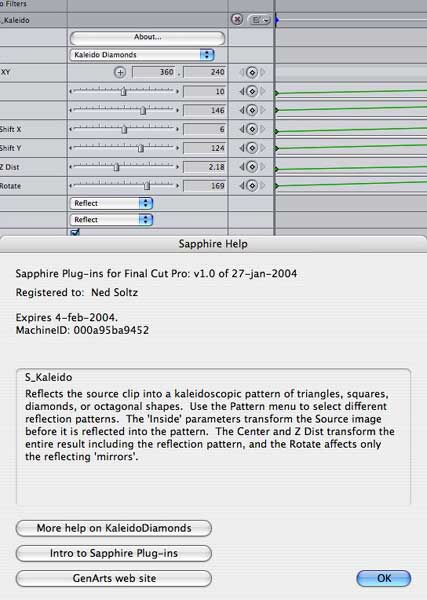
Click on above
Finally, before taking a look at some
of the specific filters, I wish to utter one final categorical
statement-I have never experienced anything even close to Sapphire
on the desktop platform. It is like that photo of the cat looking
in the mirror and seeing a lion. I have to remind myself that
I am not sitting in front of a Discreet Flame but rather in front
of my very own G5 using a tool that has been used to create everything
from commercials to The Matrix. The experience of Sapphire is
nothing less than breath-taking.
Now, to show you some of my favorite
Sapphire filters!
The Effects
Let's start with the Sapphire Film
Effect.
Film-look effects are very popular today
whether created by 24p cameras or even created in post within
software. The Sapphire Film filter combines the best of a number
of features found individually within the various film look filters
out there but not necessarily all present within one filter.
Note the ability to select negative or positive stock. Adjustments
also exist for color correction, brightness, gamma and grain
as well as simulations of various pull-down patterns. Note that
Sapphire does not change the frame rate; rather, it simulates
pull-downs and their associated motion.
Here are before and after shots of the
results of the film filter as well as the parameters applied
to achieve this effect. Of course, you will have to try it for
yourself to experience the motion changes.
Images courtesy of Getty
Images
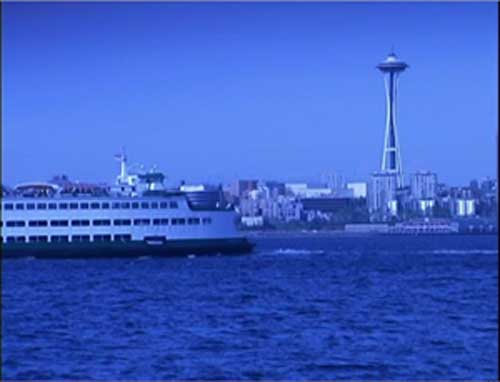
Before
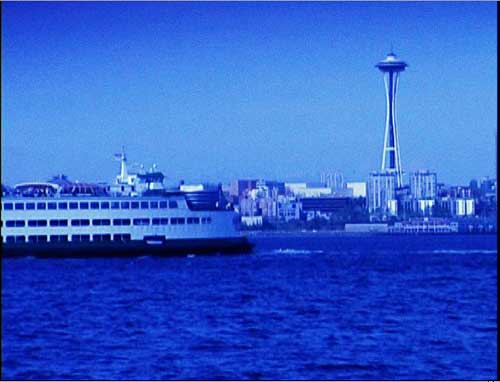
After
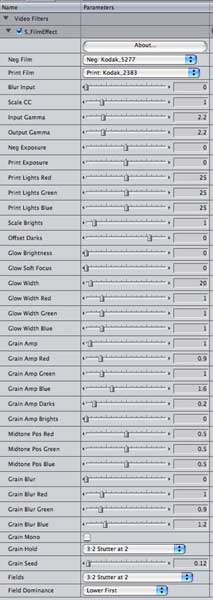
Sapphire Film Effect
Parameters
One of my favorite Sapphire filters,
and one which seems to be utilized with great frequency in film
and broadcast, is Sparkles. Note that the effect here is applied
to the entire image.
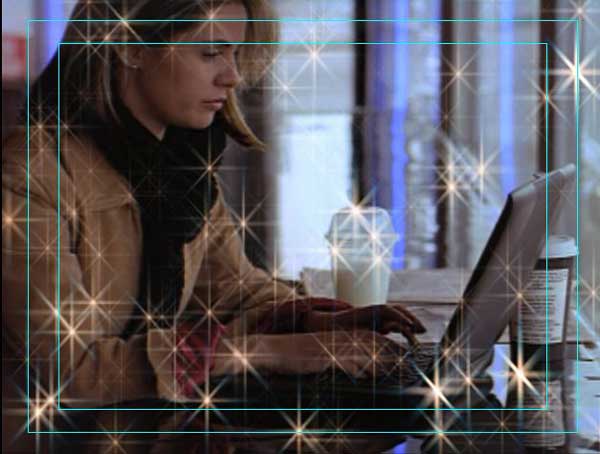
Sapphire Sparkles
Of course, all of the parameters are
keyframable and the Sparkles filter can be particularly effective
when size, frequency and intensity of the sparkles are keyframed
across the clip.
Most Sapphire filters have the ability
to specify a matte for application of the filter based upon the
value of the matte. An example of utilizing a matte to create
a composite through Sapphire is shown below. In this footage,
also courtesy of Getty Images, the rocket is launching with the
swinging watch as a background image.
This is achieved by applying Sapphire
to the clip and dragging the matte clip to the well. Tweaking
the parameters of the EdgeFlash filter produced this composite.
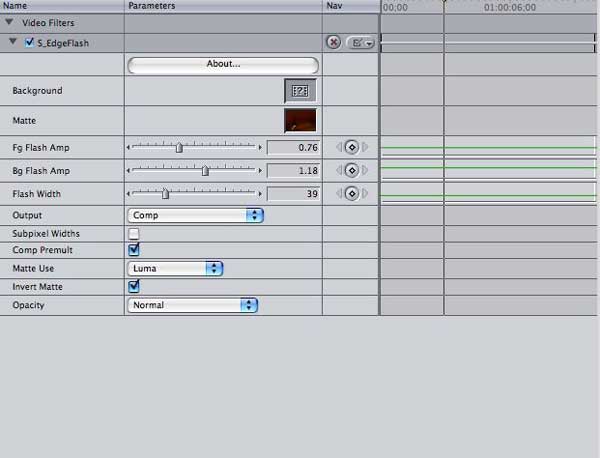
EdgeFlash Filter parameters
Sapphire is at its best, however, in
creating all kinds of cool effects.
Here I take an image of small boat just
off a coastline in an early evening scene.
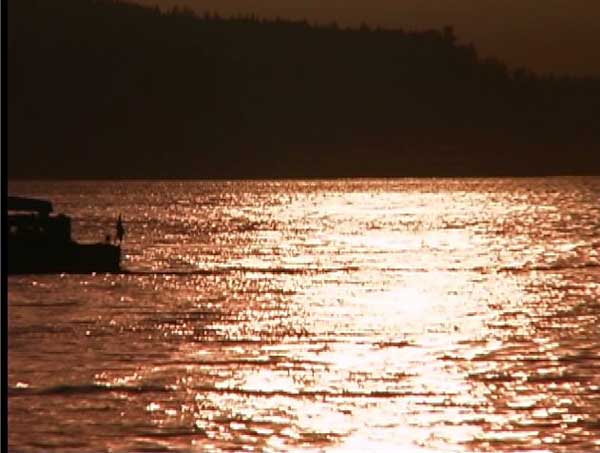
I now apply the Kaleido filter and keyframe
the parameters over the duration of the clip. Here are some of
the results:
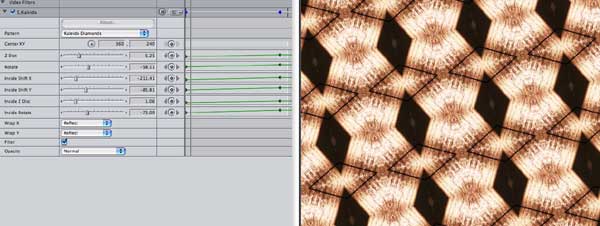
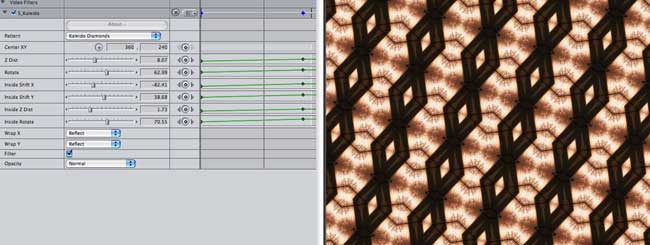
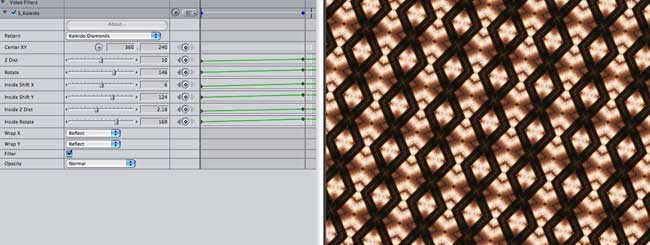
In my opinion, among the most unique
and useful of Sapphire's categories are the lighting filters.
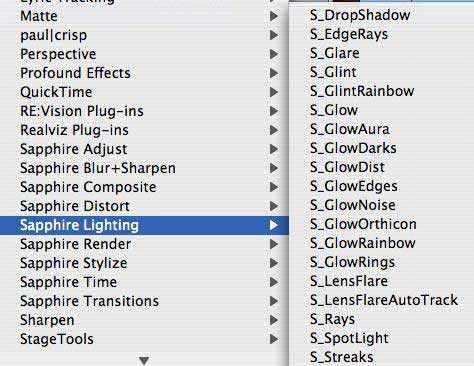
There are nine types of Glows alone,
each with ability to set mattes and with all of the detailed,
keyframable controls.
The S_GlowRainbow filter places an interesting
halo-like effect around a designated area of interest.
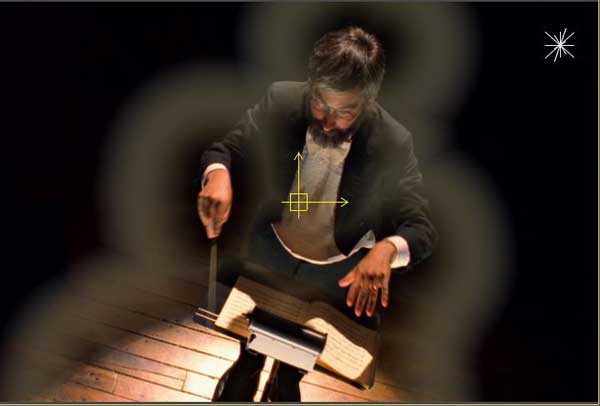
I created this particular effect in Combustion
2.1, so this also is a good opportunity to illustrate the user
interface within Combustion.


Note that for filters in Combustion which
have numerous parameters, Combustion will split the controls
into two separate pages.
We will look at another of the lighting
effects now, S_GlowEdges, created this time within After Effects
6.0.
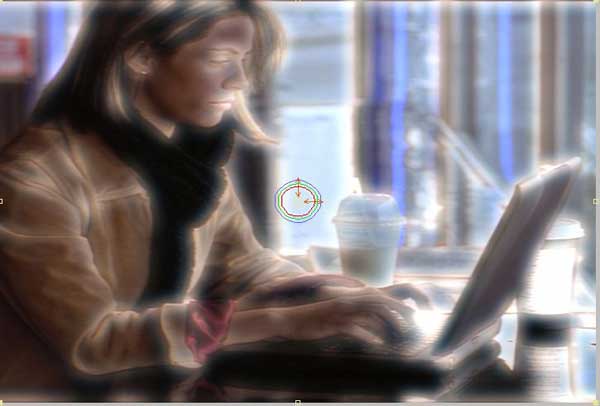
The user interface in the AE effects
window is what one would expect from AE-scrubbable parameters
and twirl-downs to reach specific adjustments within the parameter.
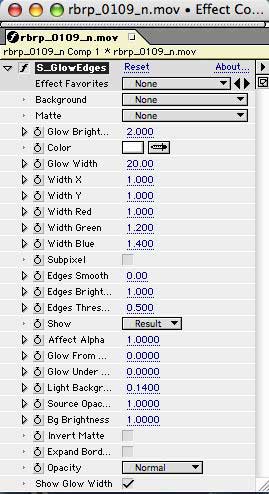
Conclusions
Sapphire AE represents a major addition
to the desktop compositor's tool box. The fact that GenArts chose
to port this high-end production package to AE, FCP and Combustion
platforms is also indicative of how the desktop Mac or PC has
taken root in serious production.
Despite all of the power that Sapphire
brings, its interface is remarkably straightforward. Each filter
may have numerous possible adjustments, but accessible and clear
documentation provides ample explanation. The fun part begins
when tweaking those controls and watching those effects become
visual realities. The multi-processing aware coding results in
snappy rendering. Its 16 bit capability and resolution independence
make Sapphire available to any project in any format. The renders
are clean with no field problems on interlaced video.
Sapphire has few peers. The aging
Final Effects Complete ($895; www.media100.com)
boasts particle filters not found within Sapphire and also superb
lighting effects. FEC, however, is not multi-processor aware
and only renders in 8 bit. Furthermore, a cumbersome Pace anti-piracy
system causes occasional crashes and compatibility problems.
Boris Continuum Complete and Boris Red 3GL ($595
and $1595 respectively; www.borisfx.com)
have image processing capabilities among their excellent multi-faceted
plug-ins. But Sapphire stands out both in the quantity and quality
of available effects. Is there more that I would like to see?
Possibly particle generators. In FCP, I would like to see category
groupings of filters like in AE, but this is a shortcoming of
FCP.
Sapphire is not for all users. If nothing
else, price dictates the dividing point between those deeply
involved in visual processing effects and those who need such
effects but do not require this high-end level of quality and
variety. For those users who work in the visual effects realm,
Sapphire has no equal. It is truly the greatest achievement to
date in image processing. And now it is available to the vast
majority of NLE and compositing applications from desktop systems
and beyond. Those who have worked with Sapphire in other platforms
and who now work in FCP/AE/Combustion and the other applications
in which Sapphire works will be among the first to acquire it.
Subdividing the complete Sapphire into smaller packages allows
greater accessibility for those who only need a specific component
of the package. Sapphire is clearly up there with the best products
I have ever tested and reviewed and I look forward to utilizing
it in my own creative endeavors.
copyright©Ned Soltz2004
Ned Soltz is
a passionate advocate of technology which enhances the creative
process. He only wishes that he were more creative. Ned is among
the founders of lafcpug, as well as a published author of numerous
articles and reviews on all things NLE. The author of several
books and technical editor of still others, Ned is often on the
road with his Powerbook G4 and mobile FCP studio. Catch him at
home or on the road at nsoltz@aol.com